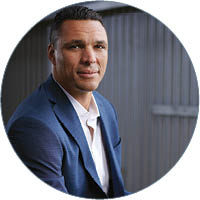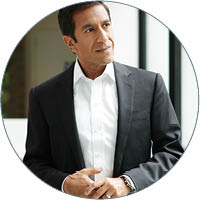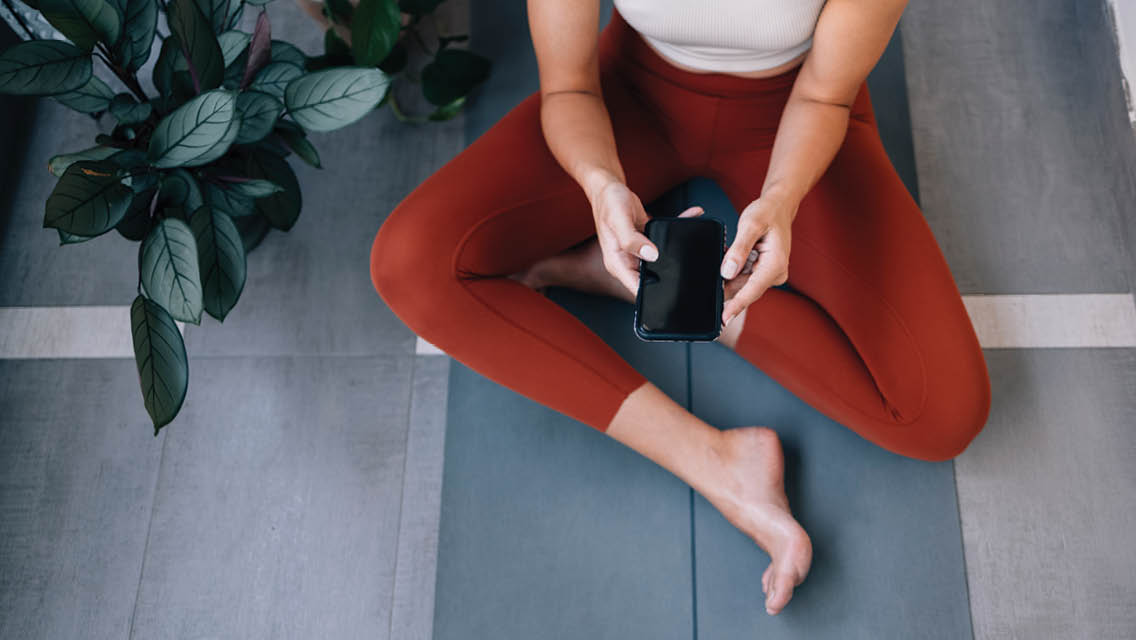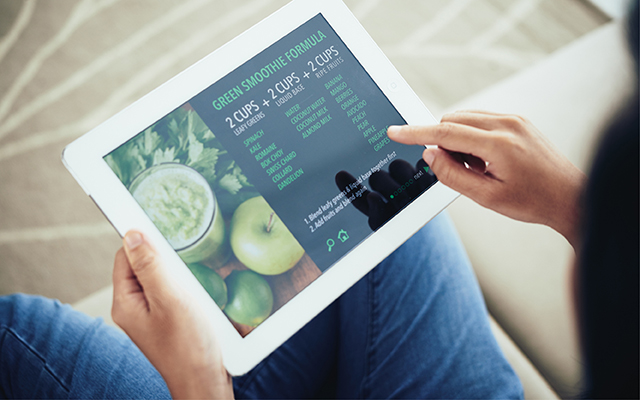These days, you’d be hard-pressed to find someone who doesn’t have a smartphone — or a smartwatch or tablet or laptop. Even those of us who made it to adulthood without access to the internet have become largely dependent on these devices for communication, entertainment, news and information, creative projects, and education. For those who grew up with tech, the thought of living without it may be difficult to imagine.
For all the benefits of personal technology, it’s far too easy to fall into an unhealthy relationship with our screens. We asked several healthy-living advocates about the role of tech in their lives and sought their advice for how to strike a healthy balance.
 Tony Gonzalez
Tony Gonzalez
Since retiring from the NFL in 2013, Tony Gonzalez has offered expert analysis for CBS Sports, Fox Sports, and Amazon. He’s been cast in TV and film roles and serves as ambassador for an after-school enrichment program in his community.
But the introverted Hall of Famer struggles to maintain a social-media presence. “It’s not a natural thing for me to be like, ‘Hey, look at my life right now,’” he says.
Gonzalez doesn’t follow much social media but admits he can get lost in YouTube. “I try to use it as a tool as much as I can, meaning I try to learn something from it.”
He finds lectures on topics that interest him, including history and philosophy. He watches master classes on acting and does much of his football research on the platform.
His own rules include not using his phone before 8 a.m., after 7 p.m., or at mealtimes, and trying to limit his use during the day.
Gonzalez also relies on his phone’s screen-time summary to let him know whether he’s spent more time online than he intends. “You’ve really got to check yourself and be honest when it’s getting out of hand,” he says.
The father of four is conscious of modeling healthy tech behavior for his family, as well as setting limits for himself and the kids. “There’s so much distraction out there, with everything vying for our attention, so you’ve got to come up with some hard rules,” he says.
His own rules include not using his phone before 8 a.m., after 7 p.m., or at mealtimes, and trying to limit his use during the day. “We need this present moment because otherwise it’ll slip away.”
(Read Gonzalez’s original cover story at “Game Changer: Tony Gonzalez“.)
 Haile Thomas
Haile Thomas
At 22, wellness activist Haile Thomas has been in the public eye for more than half her life. Inspired by her mother’s efforts to transform the family’s diet after her father was diagnosed with type 2 diabetes, the then-second grader started a YouTube channel to teach kids to cook, and she ultimately launched a nonprofit organization to educate young people about healthy eating.
Cooking demonstrations led to speaking gigs, collaborations on kids’ menus, and even multiple meetings with then-First Lady Michelle Obama. But it was Instagram that really raised her profile.
“Especially over the past few years, social media has not only become the staple of my activism, my writing, and my creativity, but an incredible way to connect with others,” says Thomas, who has more than 113,000 Instagram followers.
To keep herself grounded in real life, Thomas journals daily and occasionally shuns her devices during multiday “digital detoxes.”
While she believes social media’s potential to inspire and bring people together outweighs its pitfalls, she admits that it can be difficult to maintain perspective and positivity in a digital environment.
“Nuance can be erased in online spaces when we forget the wholeness of the human beings behind the screens,” she says, noting that it can be easy to fall into the comparison trap when scrolling through the carefully curated content people share to represent themselves online.
To keep herself grounded in real life, Thomas journals daily and occasionally shuns her devices during multiday “digital detoxes.”
“I believe there is a way we can develop healthy relationships with technology, and it can support us in doing our work on this planet,” she argues. “It can be a wonderful tool, but we have to get in the driver’s seat and understand that power.”
(Read Thomas’s original cover story at “Cooking Up Change: Haile Thomas“.)
 Sanjay Gupta
Sanjay Gupta
CNN chief medical correspondent Sanjay Gupta, MD, views the impact of personal technology on our lives through both the wide-angle lens of a journalist and the medical loupe of a trauma neurosurgeon.
“The use of smartphones and social media represents a novel and fundamental change in human sociology,” Gupta says. “Anybody who’s trying to speculate where this all goes is guessing.”
One fascinating, if frightening, facet of this change is personalization and privacy. “It’s quite likely your device knows you better than you know yourself,” he says. “It knows that the last 10 times you were about to make a certain decision — such as whether to pick a window or aisle seat — you made this decision. For you, each time feels like you’re making a new decision, but your device could tell you with a great deal of accuracy.”
And although studies link screen time with detrimental health effects like disrupted sleep, decreased physical activity, and increased depression and anxiety, Gupta believes the most urgent concern is the use of these devices while driving.
To protect our privacy and keep our impulses in check, Gupta recommends using the settings on our devices. He turns off notifications and has created a “VIP” contact list to let only certain messages ring or buzz through.
“The number of patients I see who go from having a normal day to the worst day in their lives because they decided to text while driving blows my mind. Almost nothing else matters in terms of advice if you are still using tech while driving, because that will kill you.”
To protect our privacy and keep our impulses in check, Gupta recommends using the settings on our devices. He turns off notifications and has created a “VIP” contact list to let only certain messages ring or buzz through. He has turned off his phone’s voicemail feature, which leaves him one fewer messaging channel to monitor. And he no longer uses his phone as an alarm clock, leaving it in another room while he sleeps.
“We’re going down this road,” he says. “Now it’s mostly about the guardrails.”
(Read Gupta’s original cover story at “On the Leading Edge: Sanjay Gupta“.)
 Latham Thomas
Latham Thomas
As the founder of Mama Glow, a New York City–based company that provides holistic lifestyle support for women from pre-pregnancy through new motherhood, Latham Thomas used to post frequently on social media. She promoted her business, and she also shared content about wellness and her personal life in support of the brand she leads.
“There was a time when I felt it was a responsibility to be on social media,” Thomas recalls. “I felt pressure to use my platform.”
This felt out of alignment with her beliefs about being present to the rhythms of body and mind.
Ironically, this shifted when the pandemic shut down Mama Glow’s in-person doula trainings. Thomas and her team had to find ways to use technology to recreate the deep community and interpersonal connection students needed.
“We found that it was possible to convene in a deeply powerful way,” she says. “It’s not just what’s happening in the room — it’s what’s happening in your heart. You can bring that energy from your heart space to whatever you’re doing, even virtually.”
When in-person gatherings resumed, Thomas found herself using social media more intentionally. Her personal posts have declined from one per day to a handful each month.
“When you put aside your devices, stuff surfaces,” she cautions. “Things you don’t want to deal with, things you need to heal, things you need to get in right relationship with. That’s what many of us fear — that those issues will find their way to the surface. But when you’re present with yourself, healing is possible.”
(Read Thomas’s most recent cover story at “Owning Her Glow: Latham Thomas“.)
 Jon Kabat-Zinn
Jon Kabat-Zinn
The real challenge of this time in history, says Jon Kabat-Zinn, is that we’re analog beings in an increasingly digital world.
“We have the most complicated arrangement of matter in the known universe under the vault of our skull,” the renowned scientist, author, and meditation teacher explains. “It’s the product of 3.5 billion years of evolution — not 50 years of very clever people in Silicon Valley.”
Yet today’s “attention economy” is designed to capture our analog minds for as long as possible, he notes. It primes us to seek out and consume a mix of distracting and enriching entertainment, information and misinformation, unity and division, connection and separation.
“It all boils down to ‘What are you going to pay attention to?’”
Enter mindfulness practice — a time-tested tool for paying attention to what’s carrying your attention away. Even in the storm of digital distraction, there’s always an opportunity to return to the present moment.
“Pre-digital, it wasn’t about cellphones. But now that there are cellphones, laptops, and the internet, these can become the objects of the meditation practice,” he says. Learning to recognize when your devices are pulling you away and to come back to the present, time and time again, builds your capacity to “inhabit the full dimensionality of human awareness.”
Kabat-Zinn remains sanguine about humanity’s ability to find a healthy balance with technology.
“It’s going to take a generation or two for us to figure out how to optimize the benefit and minimize the harm, but ultimately, it’s not the technology that’s going to be the problem,” he argues. “It’s the human mind and heart, and how intimate we are with what we love, our values, and our ethics. And that’s something that’s cultivatable.”
(Read Kabat-Zinn’s cover story at “Being Present: Jon Kabat-Zinn“.)
This article originally appeared as “Tech In Balance” in the March 2023 issue of Experience Life.





This Post Has One Comment
I especially appreciated Jon Kabat-Zinn’s perspectives. He breaks it down with essential information that adds reason and clarity beyond the “why.”